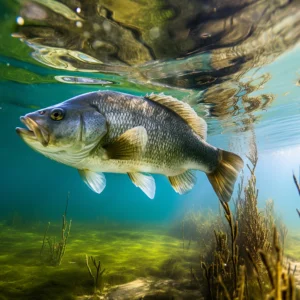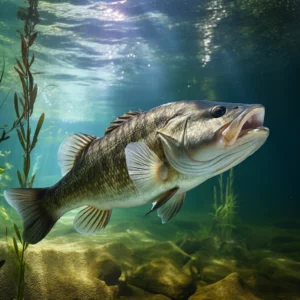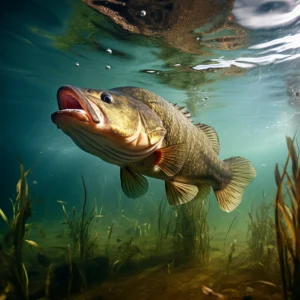Have you ever wondered if Chilean sea bass is the same as black bass? It’s a common question among seafood enthusiasts, especially when dining at a restaurant or shopping at a fish market. Both fish are known for their rich flavor and delicate texture, but are they really the same species? In this article, we will delve into the world of fish and explore the differences between Chilean sea bass and black bass.
Let’s start by clarifying one thing – Chilean sea bass is not actually a bass at all. Its scientific name is Dissostichus eleginoides, and it belongs to the Nototheniidae family. On the other hand, black bass refers to several species in the Centrarchidae family, such as largemouth bass and smallmouth bass. While they may share the same “bass” name, their genetic makeup and physical characteristics are quite distinct.
Chilean sea bass is primarily found in the Southern Ocean near Antarctica, while black bass species are native to North America. In terms of appearance, Chilean sea bass has a silver-gray color with black accents, whereas black bass species can vary in color from green to brown with dark patches. Additionally, Chilean sea bass can grow much larger than black bass, with some reaching up to 200 pounds in weight.
Now that you have a better understanding of the topic, we invite you to continue reading our article to learn more about the culinary differences, sustainability concerns, and proper cooking techniques for these two delectable fish. So, the next time you come across the term “bass” on a menu or at the fish market, you’ll be able to confidently discern whether it’s referring to Chilean sea bass or black bass.
Is Chilean sea bass the same as black bass?
Fish lovers often come across the terms Chilean sea bass and black bass when browsing through menus or shopping for seafood. While these two fish may share some similarities, they are actually distinct species with unique characteristics. In this article, we will explore the distinguishing features, habitats, diets, fishing methods, culinary uses, environmental impact, conservation efforts, and health benefits of both Chilean sea bass and black bass.
Distinguishing Features of Chilean Sea Bass
Chilean sea bass, also known as Patagonian toothfish, is a large fish that can grow up to 7 feet in length and weigh up to 250 pounds. It has a silver-gray color on its sides and a white belly. Its body is elongated and streamlined, with a large head and a prominent jaw. One of the most striking features of the Chilean sea bass is its large, predatory teeth.
Distinguishing Features of Black Bass
Black bass, on the other hand, is a collective term that refers to various species of fish belonging to the Micropterus genus, including largemouth bass and smallmouth bass. While they can vary in appearance depending on the species, black bass generally have a dark green or black color on their back and sides, with a white or light-colored belly. They have a robust body shape, with a large mouth and a broad tail.
Habitat of Chilean Sea Bass
Chilean sea bass is native to the cold waters of the Southern Ocean, particularly around the coasts of Antarctica, South Georgia, and the Falkland Islands. It is well-adapted to live in these extreme environments, where temperatures can drop below freezing. These fish inhabit deep waters, usually between 1000 and 5000 feet, and can be found near underwater ridges and seamounts.
Habitat of Black Bass
Black bass, on the other hand, are freshwater fish that are primarily found in North America. They inhabit various bodies of water, including lakes, rivers, and reservoirs. Largemouth bass, for example, prefer warm, shallow waters with ample vegetation, while smallmouth bass are more commonly found in cooler, clearer streams and rivers.
Diet of Chilean Sea Bass
Chilean sea bass is a carnivorous fish that feeds on a variety of prey, including squid, krill, and other fish. Their large predatory teeth enable them to catch and consume their prey efficiently. Due to their diet, Chilean sea bass are known to accumulate high levels of omega-3 fatty acids, which are beneficial for human health.
Diet of Black Bass
Black bass are also carnivorous, but their diet mainly consists of small fish, crustaceans, and insects. They are known for their predatory nature and their ability to ambush their prey. Largemouth bass, in particular, have been observed to feed on frogs, snakes, and even birds.
Fishing Methods for Chilean Sea Bass
Chilean sea bass is a highly sought-after species in the fishing industry, and various methods are used to catch them. In the past, longline fishing was commonly employed, but due to concerns about bycatch and overfishing, this method has been restricted in many regions. Nowadays, more sustainable and selective fishing techniques, such as hook and line, are preferred to minimize the impact on the population.
Fishing Methods for Black Bass
Black bass, being freshwater fish, are commonly targeted by anglers using recreational fishing techniques. These can include techniques such as casting lures, using live bait, or fly fishing. Different strategies and equipment may be employed depending on the habitat and behavior of the specific bass species being targeted.
Culinary Uses of Chilean Sea Bass
Chilean sea bass is prized for its delicate, white flesh and its rich flavor. It has a firm texture that holds up well during cooking, making it suitable for a variety of culinary applications. Chilean sea bass can be grilled, seared, poached, or baked. Its mild taste pairs well with various sauces and seasonings, making it a versatile choice for seafood dishes.
Culinary Uses of Black Bass
Black bass, particularly largemouth bass, is also valued in the culinary world. Its meat is tender and flaky, with a mild and slightly sweet flavor. Black bass can be prepared in various ways, including frying, baking, or broiling. Its versatility allows it to be incorporated into a wide range of dishes, from simple pan-fried fillets to more elaborate recipes.
Environmental Impact and Conservation
Overfishing of Chilean Sea Bass
The popularity of Chilean sea bass has led to overfishing in some regions, resulting in significant declines in their population. The slow growth rate and late maturity of these fish make them particularly vulnerable to overexploitation. Furthermore, illegal, unreported, and unregulated (IUU) fishing has been a major factor contributing to the decline of Chilean sea bass populations. This has prompted the need for stricter regulations and conservation measures to protect their numbers.
Overfishing of Black Bass
While black bass populations are not currently facing the same level of overfishing as Chilean sea bass, some concerns exist regarding their sustainability. Overharvesting, habitat destruction, and the introduction of non-native species can all impact black bass populations. It is important for anglers and policymakers to practice responsible fishing and implement conservation measures to ensure the long-term viability of black bass populations.
Conservation Efforts for Chilean Sea Bass
To address the overfishing of Chilean sea bass, international organizations, such as the Commission for the Conservation of Antarctic Marine Living Resources (CCAMLR), have implemented stricter regulations and monitoring programs. These include catch limits, area closures, and vessel monitoring systems, which aim to reduce illegal fishing and protect the species’ habitat. Additionally, consumer awareness and support for sustainably sourced seafood can contribute to the conservation of Chilean sea bass.
Conservation Efforts for Black Bass
Conservation efforts for black bass primarily focus on habitat restoration, water quality improvement, and the establishment of fishing regulations. Many organizations advocate for catch-and-release practices among anglers to help preserve the black bass populations. Additionally, education and outreach programs help raise awareness about responsible fishing practices and the importance of conserving black bass habitats.
Health and Nutrition
Mercury Levels in Chilean Sea Bass
Chilean sea bass is known to have higher levels of mercury compared to some other fish species. While moderate consumption is generally considered safe for adults, pregnant women and young children are advised to limit their intake due to the potential risks associated with mercury exposure. It is recommended to choose sustainably sourced Chilean sea bass and follow dietary guidelines provided by health authorities.
Mercury Levels in Black Bass
Black bass, like many other freshwater fish, can also contain traces of mercury in their flesh. However, the mercury levels in black bass are typically lower compared to larger predatory fish found in oceans. Nonetheless, it is still advisable to consume black bass in moderation and follow guidelines regarding fish consumption, particularly for sensitive populations such as pregnant women and children.
Health Benefits of Consuming Chilean Sea Bass
Despite the concerns about mercury levels, Chilean sea bass offers several health benefits when consumed in moderation. It is a good source of lean protein, omega-3 fatty acids, and various vitamins and minerals. Omega-3 fatty acids have been linked to numerous health benefits, including improved heart health, reduced inflammation, and brain function support.
Health Benefits of Consuming Black Bass
Black bass, like Chilean sea bass, provides a lean source of protein and essential nutrients. While the omega-3 fatty acid content may be lower compared to some cold-water fish, black bass can still contribute to a healthy diet. Protein is essential for muscle growth and repair, while the vitamins and minerals found in black bass support overall well-being.
Conclusion
In conclusion, Chilean sea bass and black bass are distinct species with their own unique characteristics. While they may share some similarities, such as being carnivorous fish with desirable culinary qualities, they differ in terms of habitat, appearance, diet, and fishing methods. Additionally, conservation efforts are necessary to protect both Chilean sea bass and black bass populations from overfishing and habitat degradation. When consumed in moderation, both fish can be part of a healthy and balanced diet, providing valuable nutrients and contributing to an enjoyable culinary experience.




